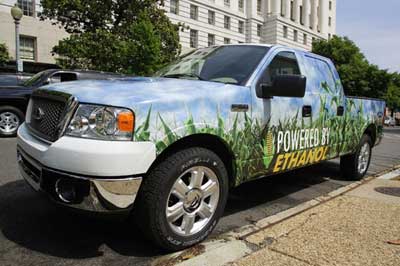Recent Articles
Popular Makes
Body Types
Top Ten Facts about E85
Flexible fuel vehicles and E85 fuel promise blue skies and a tomorrow without oil. But do they deliver?
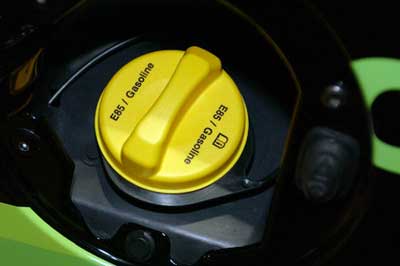
Go figure: Our oil salvation is corn. So says the U.S. Government, some environmentalists, and, mostly, domestic automakers, led by the General Motors advertising charge to “Live Green and Go Yellow.” The General is backing up this claim with an aggressive product assault of flex-capable vehicles, which can operate either with E85 fuel or gasoline. Those that are available are primarily in the large vehicle segment – you know – SUVs and trucks – though there are a handful of sedans with flex-fuel systems. Ford and Chrysler are also on the corn fuel bandwagon, of course, each promising to build and sell a growing number of flex-fuel vehicles to the general public. Proponents claim that E85 fuel and the flex-fuel vehicles that go with it will reduce our dependence on oil, is a more environmentally friendly solution, and provides a subsidy for American farmers. Some call it the anti-hybrid plan for an oil-free and clear sky society. Others say that’s hogwash. They point out that E85 takes more energy to refine than does regular gasoline, costs more per gallon, and is less efficient that regular gasoline – thus causing more fill ups -- of more expensive fuel. Then there's its utter lack of distribution, the availability of a wide selection of vehicles, and refining issues that hurt price and performance. Fix those fairly intimidating hurdles, however, and flexible fuel vehicles make an intriguing solution to regular gasoline, one the nation should invest in. But there’s still a long way to go between here and there. If we ever do get to a place where E85 fuel and the flex-fuel vehicles that go along with it are affordable and convenient to operate, it may offer a way to reduce the amount of oil we use, and the pollution we create.
Availability of E85
According to the National Ethanol Vehicle Coalition, there are no E85 fueling pumps in Orange County, California. In fact, most of the E85 pumps are centralized in the Midwest. And while the government has made plenty of noise recently about increasing the availability of E85, the reality is that it takes an estimated $200,000 to fit a gas station for that type of fuel option, a price tag gas station owners are likely to blanch at given the limited number of flex-fuel vehicles on the road. Of late, the CEOs of Chrysler Ford and General Motors have been lobbying aggressively for government assistance in making E85 more available around the nation, and with that, promising many more flex-fuel vehicles. Until the happens, however, flex-fuel vehicles will offer only a minimal impact on our oil consumption – and there’s no telling how successful adoption of E85 would be, even with a readily available supply, as the fuel is less efficient and at least as costly as regular gasoline.
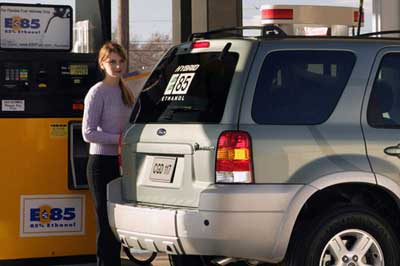
2006 Flex-fuel vehicles
If you’re in the market for a truck, you’re in luck, as General Motors, Dodge, Ford and Nissan offer full-size pickup trucks that are E85-capable. But that’s about it: for the 2006 and 07 model years, SUVs are limited to GM models such as the Chevrolet Tahoe, and cars are limited to the Impala and the Monte Carlo. DaimlerChrysler currently builds several flex-fuel vehicles, including the Chrysler Sebring, Dodge Caravan and Dodge Grand Caravan, Dodge Durango, Dodge Ram and Dodge Stratus. According to the National Ethanol Coalition, however, all are reserved for fleet purchase. This will soon change, but the impact won’t be felt until 2007 – and, really, the 2008 model year -- as General Motors, Chrysler, Ford and others ramp up their flex-fuel initiatives. While Asian automakers have been noticeably quiet about E85, you can bet that if E85 gains momentum, Toyota, Honda and others will quickly join the flex-fuel party. 2006 Flex-fuel vehicles available for sale: Chevrolet Avalanche 5.3-liter, V8 engine: 11/14 E85 MPG Flexible fuel identification: Z Chevrolet Monte Carlo and Impala 3.5-liter V6 engine: 16/23 E85 MPG Flex Fuel identification: K Chevrolet Silverado, GMC Sierra 5.3-liter V8 engine: 12/16 E85 MPG Flexible fuel identification: Z Chevrolet Suburban, GMC Yukon XL 5.3-liter, V8 engine: 11/14 E85 MPG Flexible fuel identification: Z Chevrolet Tahoe, GMC Yukon 5.3-liter, V8 engine: 11/15 E85 MPG Flexible fuel identification: Z Ford F-150 5.4-liter, V8 engine: 11/15 E85 MPG Flexible fuel identification: V Ford Crown Victoria, Mercury Grand Marquis, Lincoln Town Car 4.6-liter V8 engine: 12/18 E85 MPG Flexible fuel identification: V Nissan Titan 5.6-liter, V8 engine: 10/14 E85 MPG Flexible fuel identification: B
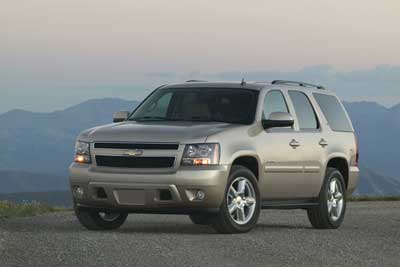
Future Flex-fuel vehicles
In addition to 2006 models, Chrysler, Dodge and Jeep will expand their available flex-fuel lineup, currently reserved for fleet sales. Vehicles will include those powered by the 4.7-liter V8 engine, such as the Jeep Commander, Grand Cherokee, Dodge Durango, Ram and Dakota; the Chrysler Sebring, with the automaker’s 2.7-liter V6 engine, and minivans with the 3.3-liter V6 engine. In addition to DaimlerChrysler’s plans, look for significantly more available models from General Motors and Ford, as domestic automakers put pressure on Congress to help expand the availability of E85 fuel, and improvements are made to the refining method – thus bringing the price down. Also on the horizon is a flex-fuel program from Toyota, which currently sells these vehicles in Brazil. Toyota says that they will have E85 capable vehicles for sale in the US market during the 2008 model year. Honda, while aggressively pursuing hybrid and hydrogen fuel cell programs, says that they are looking at E85.

E85 fuel
Flexible fuel vehicles run on gasoline or “E85”, which is a mix of 85 percent ethanol and 15 percent gas. Refiners take ethanol; mix it with gasoline to make E85 fuel, the benefits of which are cleaner, more environmentally friendly emissions and slightly more horsepower. It’s not really new. In fact, we all use what some call “E10” right now, which is a mix of 90 percent gasoline and 10 percent ethanol, and will soon begin using more ethanol, as refiners replace the chemical MTBE with ethanol as an additive to regular gasoline. According to the National Coalition of Ethanol Vehicles, “ethanol is produced by the fermentation of plant sugars, typically corn and other grains.” Look at it this way: they mash a bunch of corn, wheat or sugarcane into a pulp, squeeze out the liquid and, basically, make ethanol. Currently, the US uses corn, and with it comes a heavy subsidy and a 54-cent per gallon tariff on imported corn juice. That’s something proponents say helps to protect our farmers, while critics claim that it keeps the price high and hurts competition, ultimately bumping up the price at the pump and slowing market acceptance. Ah – so it’s a political issue. That means it will be solved, and Exxon can rest easy. Fortunately, it’s so popular right now that ethanol may solve itself – and wouldn’t that be a neat trick. There’s even talk of adding sugarcane ethanol, much in the same way Brazil refines ethanol. The trouble is that sugarcane-as-ethanol is considered to be an environmental boo-boo, and some claim that a higher subsidy is needed to make our own.
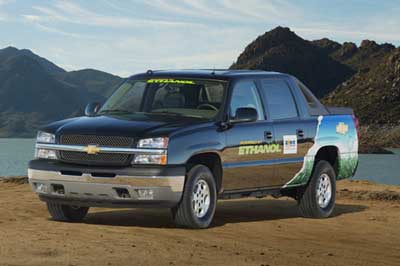
E85 miles per gallon
Simply put, a flex-fuel vehicle using gasoline travels farther, at a clip of about 3 miles per gallon. That’s what we discovered while driving a 2007 Chevrolet Avalanche with flex-fuel capability. We clocked an average fuel economy of 13.4 miles per gallon using regular grade unleaded – not so hot, but much better than E85. A tank of E85 gasoline registered just 10.4 miles per gallon under virtually identical driving conditions. This makes the use the E85 more expensive, by around $20 more per tank. And while that may seem like chump change, it’s exactly the opposite of what people are currently looking to accomplish.
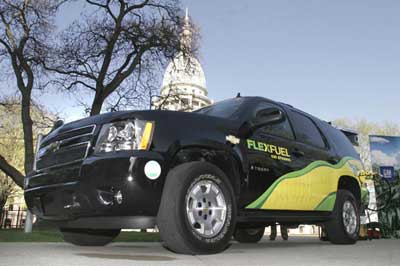
E85 performance
There are few differences between gasoline and E85 gasoline. In fact many drivers may be barely aware of the differences. Performance is virtually identical, with a small boost in horsepower and a slight increase in acceleration. Driving is more or less the same, except for a slight olfactory difference – E85 smells starchy at start up and when you step hard on the accelerator. Pumping the gas is a virtually odorless experience, except for that wisp of starch. The most impressive performance benefit to E85, however, is the feeling you get while in traffic. There you are, sitting in your mammoth truck or SUV, smug in the knowledge that you’re burning clean -- and doing so without sacrifice to performance or utility.
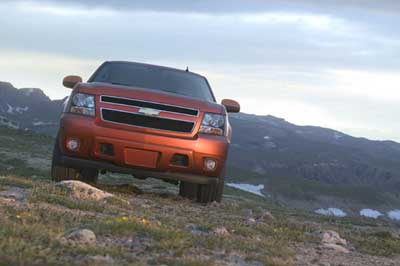
Price – sticker
You pay no premium for the privilege and good feeling that comes with driving a flex-fuel vehicle. And you shouldn't, not even a penny more. And to think – on General Motors’ flex-fuel vehicles, you get a cool yellow gas cap in the deal. It could be the only technology automakers don’t charge more for, even though they’re now marketing it heavily. This may be because as of today, a flex-fuel vehicle has little application outside of fleets and the Midwest, making it an unlikely purchase-driving benefit. Should that change, you never know -- we may yet see some price add-ons for special flex-fuel vehicles, if supply and demand is ever truly solved. After all, automakers never met a marketing-driven benefit they didn't enjoy charging a premium for.
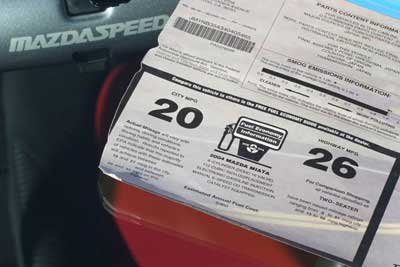
Price at the pump
Though the price on the sticker is the same, the price on the pump is more, either per gallon or per tank. Currently, E85 prices are running close to those of regular grade unleaded gasoline. In our area, E85 cost $3.20 per gallon, about three cents less expensive than regular grade gasoline at the same filling station. Flex-fuel proponents promise that the price will come down as more people begin using the fuel, but detractors claim that our corn-based ethanol is not as efficient as sugarcane, and that farm subsidies to make corn ethanol are causing higher prices. Add to that the recent switch-over from MTBE to ethanol in regular gasoline, and availability of ethanol may also be affecting the price at the pump. The real cost of E85, however, comes when you leave the station. Inefficient at a tune of about three or more miles per gallon, it costs more to get down the road, causing drivers to fill up more often – and pay virtually the same to do so. When you factor in its fuel economy – or lack thereof – the price of E85 would have to be around 20 percent less than regular gasoline in order to break even cost-wise.
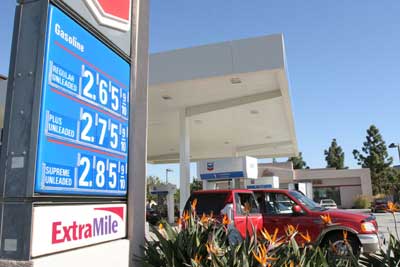
Environmental impact
According to the National Ethanol Vehicle Coalition, E85 reduces greenhouse gas emissions such as carbon monoxide by as much as 39 to 46 percent, compared to gasoline. It also reduces hydrocarbon and benzene emissions. The reason is the ethanol, as its water soluble and biodegradable, thus much cleaner burning. Ethanol makes up 85 percent of E85 fuel, the remaining 15 percent being gasoline. Bottom lne: E85 is cleaner at the tailpipe than a gas-only powered engine. For those shopping for an environmentally clean car, be aware that many critics believe that the fossil fuel used to refine E85 offsets any gain you may get at the tail pipe. As the refinement of this fuel improves, look for the environmental benefits to also improve.
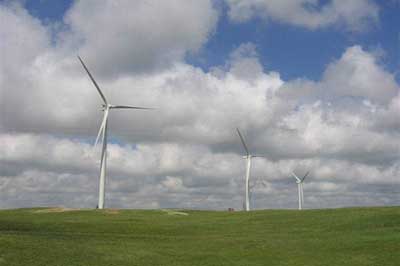
Is flex-fuel a good buy?
Not really. Flex-fuel vehicles help the environment at the tailpipe, and could theoretically reduce our oil consumption, but they suffer in terms of cost, fuel efficiency and availability. To date, E85 fueling stations are largely located in the Midwest, with a few scattered stations located in other metropolitan areas. And while automakers have been building flex-fuel vehicles since 1998, there are only a few choices outside of trucks and SUVs. For the 2006 model year, only the Chevrolet Impala, Monte Carlo, Ford Taurus, Ford Crown Victoria, Mercury Grand Marquis and Lincoln Town Car offer a flex-fuel model. That will change in 2007, as more flex-fuel vehicles come online. But even with a larger pool of vehicles from which to choose, fueling stations must be added in large numbers, and E85 fuel must be made more efficiently – for price and performance – for flex-fuel vehicles to offer a realistic option for car buyers interested in fuel economy, lower emissions and reduced oil consumption. Given the challenges, then, E85-powered vehicles fall short of a credible option today – but may be one in the future. If you’re shopping for a larger vehicle, say a truck or SUV, and plan to keep your vehicle for more than three or four years, flex-fuel may offer a decent long-term gamble. For shoppers more concerned about today, however, flex-fuel is a nice dream in need of a reality check. Pros: Clean burning fuel good for the environment Reduces oil consumption Same sticker price as a non-flex-fuel vehicle Slight improvement in performance Cons: Lack of fuel stations the carry E85 fuel Poor efficiency Higher fuel cost Few available models on sale
Photos courtesy of the automakers, Ron Perry
